Watering Holes
"We never know the worth of water till the well is dry"
Thomas Fuller, Gnomologia, 1732
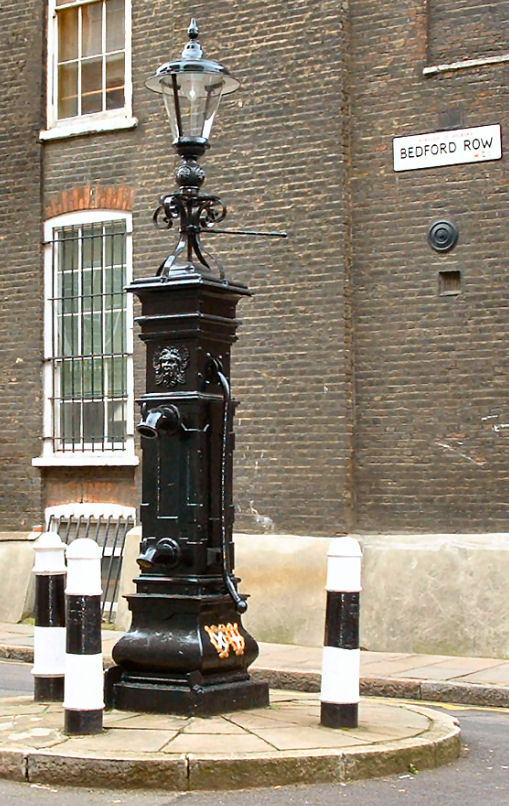
This beautiful old water pump, complete with a lamp, stands in the middle of the road in Bedford Row, near to Jockey Fields and Grays Inn. Local dwellers and Lawyers would draw their water in the early eighteen hundreds. Charles Dickens lived and worked close by so would have almost certainly used this pump at some time.
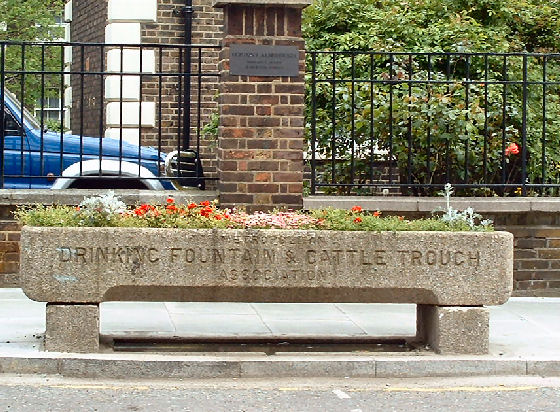
Another disappearing piece of street furniture in London is the cattle trough, which was run by the Cattle Trough Association and could be found on many street corners throughout London. They were quite often situated in the forecourt of London pubs, so as to offer refreshments to horses whilst the driver consumed a pint or two. If the driver didn’t use the pub there would be a small charge for the cattle trough.
These troughs were in use until the early sixties when motor cars had finally made horse and carts redundant. Today the surviving troughs are used for flower displays and add charm to many of London’s side streets.
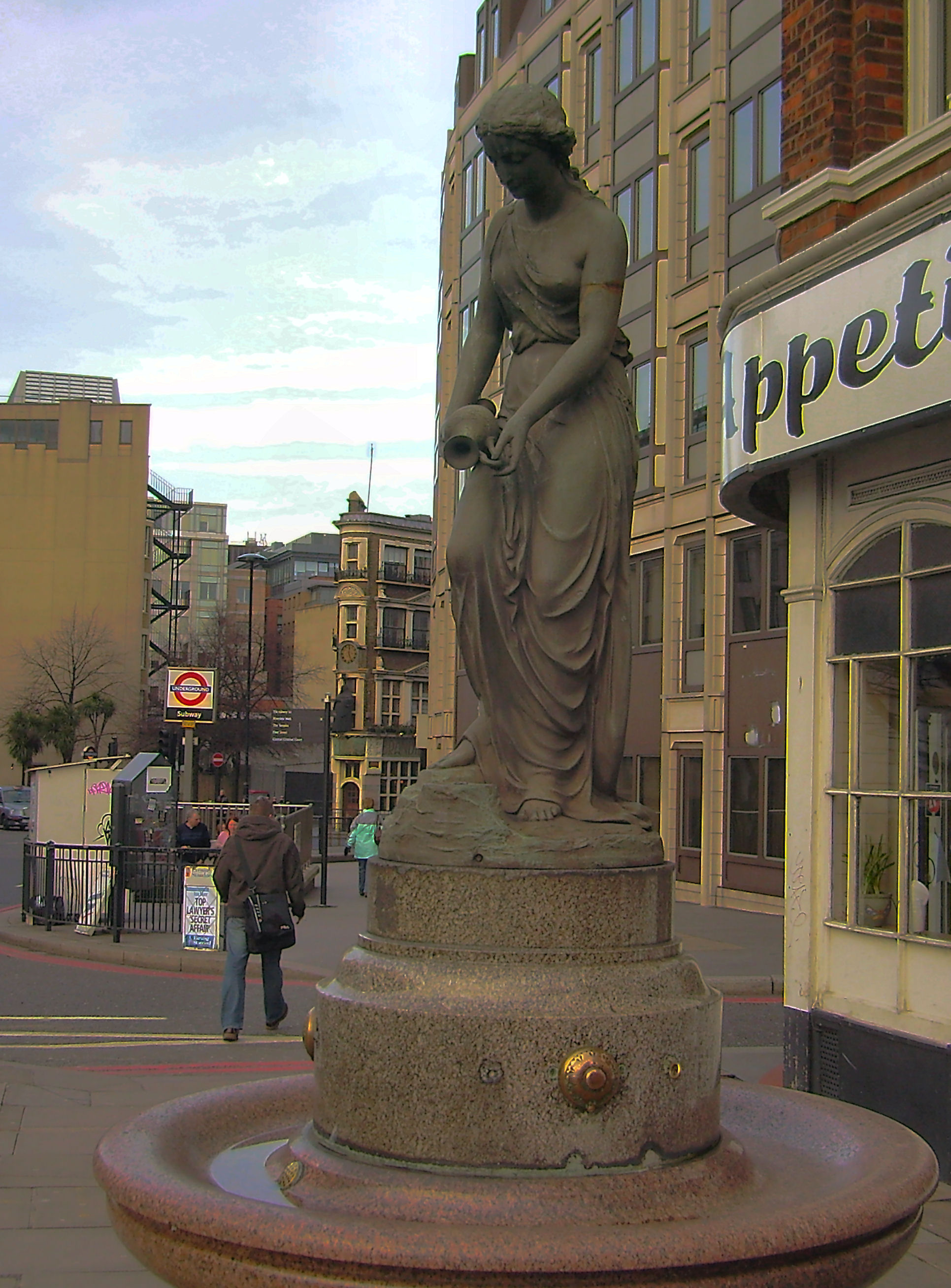
Drinking Fountain, "Temperance", New Bridge Street.
Female figure (Temperance) pours water from an urn into the bowl. Originally erected in front of the Royal Exchange, it was moved to make way for the City War Memorial. In its original position, the bronze figure stood on an ornamented square marble base, with four lion mask waterspouts. On the base were three bronze dolphins. The holes for the attachment of the dolphins are still clearly visible.
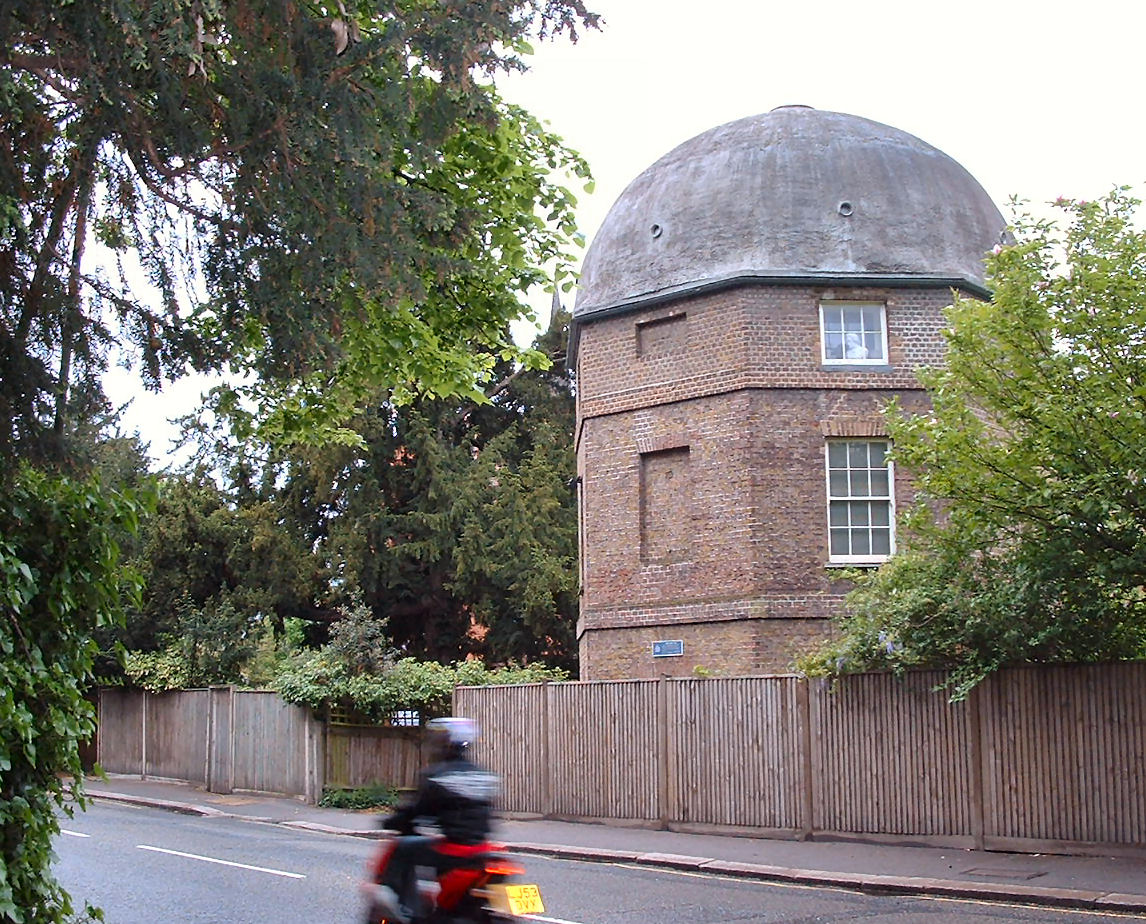
Arthur Road in the leafy suburbs of Wimbledon comes to life every June with the Lawn Tennis Association’s much visited two weeks of the Wimbledon tennis tournament, which is held in nearby Wimbledon Park Road. Long before this world event took place, or even before tennis and its stars for that matter became household names, Wimbledon was a rather sleepy rural retreat. Along with its near neighbour, the windmill on the Common, this rather peculiar shaped building was both possibly the only attraction in this area.
The story of this well begins during 1744 when Wimbledon Park was inherited by the first Earl Spencer, who was a Great ancestor to Princess Diana. He and his family began spending their summers here and had this Artesian Well built in Arthur Road, Wimbledon during 1763. It was to provide water for Earl Spencer’s nearby home. In 1798 the well’s depth was increased to over 500ft, although soon afterwards it dried up. The fourth Earl Spencer sold his Wimbledon estates including the well to developers in 1864. The well became disused and derelict for more than a century. It was not until 1975 that the building was for the first time, converted into a private dwelling.

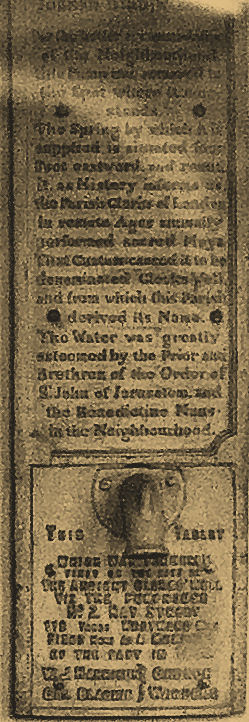
The Clerk’s Well gives its name to this area of London known as Clerkenwell. The scene of medieval miracle plays was once performed around this well by the local Parish Clerks of London. The well was located in the boundary wall of St Mary's Nunnery, whereby, after the dissolution of the nunnery, the boundary wall was destroyed and for some time the well became lost. This ancient waterhole was only rediscovered by chance during the rebuilding of Farringdon Lane during 1924. The Clerk’s Well is now displayed in the basement of an office block, Well Court, where it can be seen through an office window at Street level in Farringdon Lane.
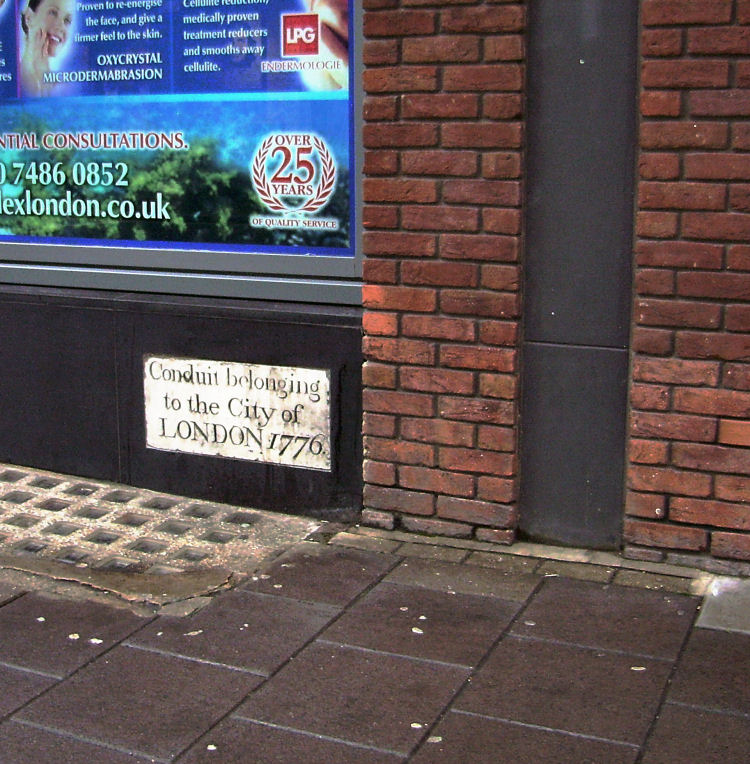
Marylebone Conduit.
Marylebone Lane is nowadays a side street which leads from Oxford Street to Marylebone High Street, and a popular shortcut for traffic wishing to filter through to Wigmore Street, which in turn runs parallel with Oxford Street.
Inset in this modern piece of wall at the corner of Wigmore Street and Marylebone Lane is this ancient plaque that goes unnoticed by the vast majority of passers-by. This very spot was once the main source of the water supply to the City of London. The River Tyburn, with conduit head chiefly alongside present-day Oxford Street, where it would then flow down beneath Brooke Street. This plaque reminds us where the water was once piped to the City of London, close by the Lord Mayor's old Banqueting House, which once stood in fields now occupied by nearby Stratford Place. Alongside this field was a small lane leading to Marylebone - the present day 'Marylebone Lane' - where on this corner stood the chief conduit, now marked by this commemorative stone inlaid into the wall and dated 1776 with its City of London claim.
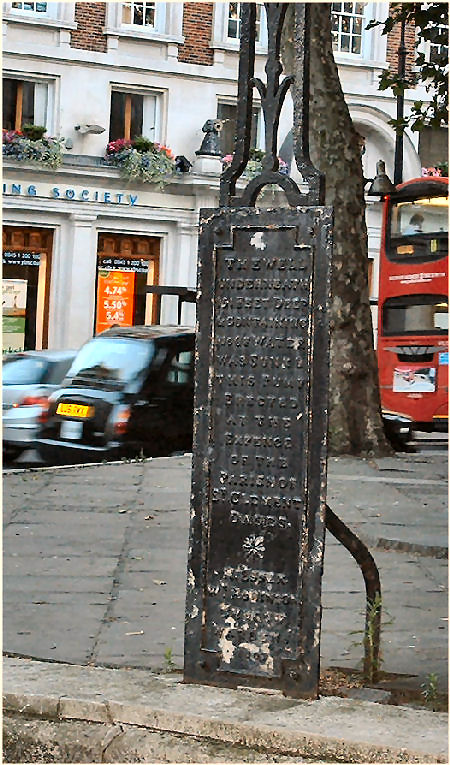
An iron marker where once stood the St Clements Danes well.
St Clements Danes was first built in the ninth century by the Danish community and in 1040 Harold Harefoot, the son of King Canute, was buried here. During the 17th to 19th centuries, many people were buried in the crypt and the chain hanging on the crypt wall was used to secure the coffin lids against body-snatchers. It was rebuilt during the reign of William the Conqueror, and again by Sir Christopher Wren in 1681, and finally in 1958 after being badly damaged by a German incendiary bomb in the blitz of 1941. Possibly it is more famous for the nursery rhyme ‘Oranges and Lemons said the bells of St Clement's than for anything else, with around the 31st of March each year an Orange and Lemon service taking place.
Just on the church boundary is another surprising artefact, an old iron marker commemorating an ancient well. In the Survey of London, 1598 Stow recalls, "Because it standeth near to Clement's Church, but nearer to the fair fountain called Clements Well." This Holy Well was once a small stream that ran beneath St Clements Danes church in the Strand, and then down beneath what is today’s Strand Lane, before finally emptying into the River Thames.
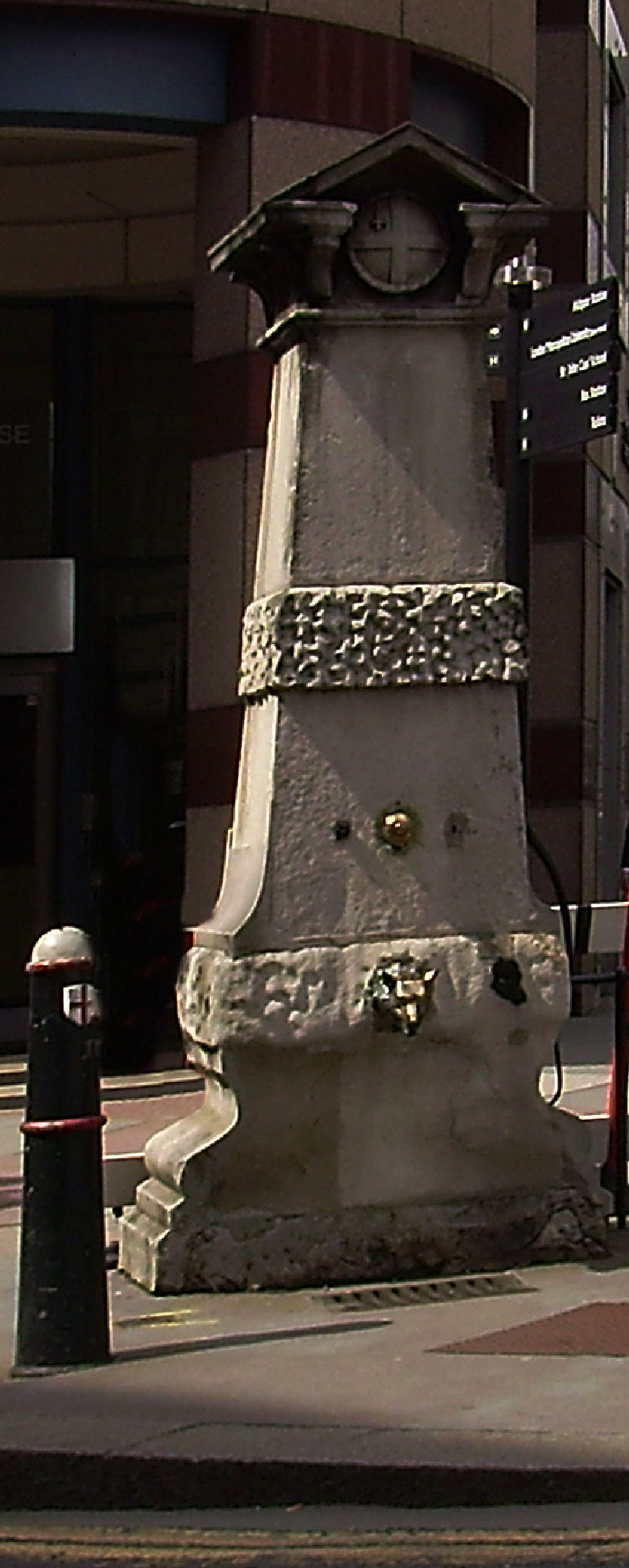
Aldgate Pump
Aldgate derives its name from the ancient Roman gate, built as part of the London Wall, which led to the one-time Roman capital city of England, Colchester. London or Londinium as the Romans were to name it, soon surpassed Colchester, due to its close proximity to the River Thames, which offered an ideal means of transporting goods from within the Roman Empire. Just a few metres from the old London Wall stands the Aldgate Pump.
This grade two listed pump, erected on the site of a former medieval well, was first mentioned in John Stow’s 1598 survey of London and was still pretty old then. It was modified in the mid 19th century, probably when it was moved a short distance for road-widening. It once supported a large gas lamp on the top, the marks of which are still visible. The pump itself was last in use as late as 1927
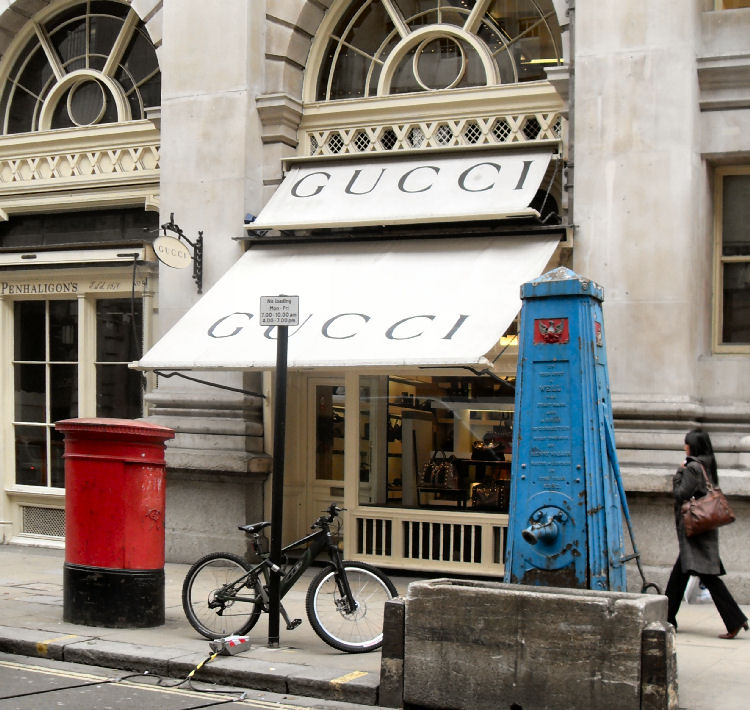
The water pump designed by architect Nathaniel Wright in Cornhill, London.
The City of London inside of the square mile has many pumps and wells which have blended in nicely with our modern day buildings. Although they are no longer in use they still have a certain amount of charm and quaintness. Many of these old pumps long ago were a necessity, and large amounts of people I am sure would have queued along with cattle, to refresh themselves.
This water pump standing on Cornhill was used to water the horses in Victorian times and was a replacement for the first mechanically pumped public water supply in London. Constructed here in 1582 on the site of an even earlier hand-pump, the mechanism a force pump is driven by a water wheel under the northernmost arch of London Bridge transferred water from the Thames through lead pipes to four outlets.
London Time

Follow Us
The contents of this website are the property of knowledgeoflondon.com and therefore must not be reproduced without permission. Every effort is made to ensure the details contained on this website are correct, however, we cannot accept responsibility for errors and omissions.
© Copyright 2004 -
Contact Us | Advertise